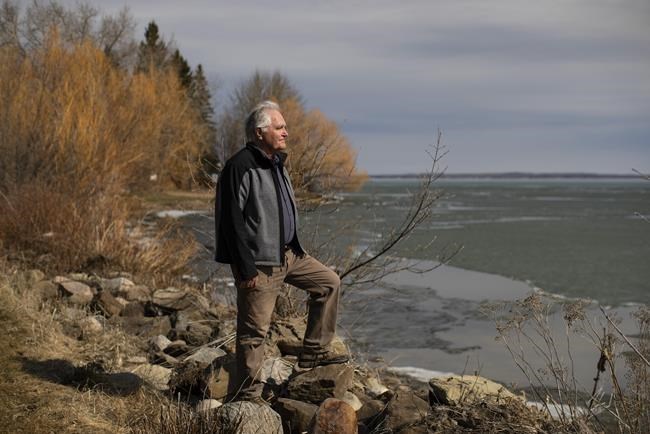EDMONTON — Thousands of Alberta cottagers and homeowners are waiting anxiously to see if a provincial regulator will allow a large cattle feedlot to be developed near a popular and environmentally fragile recreational lake.
Pigeon Lake, about 100 kilometres southwest of Edmonton, is home to about 5,800 seasonal and permanent residents and attracts about 100,000 visitors a year to its leafy setting, beaches, boating and fishing.
But many say that's threatened by a proposal before the Natural Resources Conservation Board. G&S Cattle of Ponoka, Alta., wants to pen 4,000 cattle about four kilometres west of Pigeon Lake in addition to its existing operation of more than 1,000 animals.
Those new animals would produce an estimated 36 tonnes of manure a day, which would be spread on about 1,000 hectares — almost six per cent of the lake's entire watershed.
"I've never seen so much concern in the time I've been at the lake," said Don Davidson, mayor of the summer village of Grandview, who has been in the community since the 1980s. "Everybody is concerned about this."
Greg Thalen, head of G&S Cattle, declined an interview request.
Pigeon Lake sits in a valley like tea in a half-full cup, filled by runoff from surrounding land and drained by one small stream. Studies have shown its waters linger for up to 100 years, making it highly vulnerable.
In the past, runoff nutrients from fertilizers and sewage fed foul-smelling algae blooms so bad they clotted shorelines and made headlines.
"We were getting almost yearly algae advisories," Davidson said.
Since then, he said, residents have cleaned up their act.
Cosmetic fertilizer use has been banned. Septic fields have been replaced. South shore municipalities have spent more than $30 million on wastewater treatment. Local groups have spent millions to manage runoff, earning two provincial environmental awards.
In 2018, 12 summer villages, two counties and four First Nations endorsed the Pigeon Lake Watershed Management Plan, which attempts to limit nutrients such as phosphorus seeping into the lake and specifically says feedlots aren't appropriate.
Because of the lakewater's slow turnover, progress is slow. But it's there.
"We've seen a reduction in the number of algae warnings and the severity of the blooms," Davidson said.
"We've reduced the nutrient loading. We're looking to see long-term improvement in the lake."
The feedlot expansion threatens that, said Dave Labutis, whose family has farmed in the area for three generations.
"Most of the people who live in the area are farmers or ex-farmers," he said. "Our hearts support farming.
"Our problem is with the intensivity of this. There are small farms everywhere in that area but none of them number those kinds of cows.
"It's just way too close to the lake."
Jeannette Hall, a former Alberta Environment conservation officer for Pigeon Lake who has studied the area, linked cattle operations and nutrients in the water.
Research conducted for the management plan concludes that, while about five per cent of phosphorus in the lake comes from residential development, about a quarter comes from stream runoff.
Creeks flowing from parts of the watershed that don't have such operations carry up to about 50 kilograms of phosphorus into the lake every year. The two creeks that do bring about 1,000 kilograms, Hall said.
"It just jumps right off the page. The feedlots are the highest contributor."
Those creeks empty near two popular beaches, a provincial park and a conservation area.
The Pigeon Lake Watershed Association has filed a statement of concern with the regulator. So have more than 300 residents.
The County of Wetaskiwin, while acknowledging the primacy of agriculture in the area, has asked the regulator for an environmental assessment of the project.
The board doesn't normally require environmental assessments, said spokesman Andy Cumming. Applications are judged against standards intended to ensure feedlots won't contaminate groundwater, have adequate runoff controls and are far enough from water bodies and neighbours.
Once a decision is made, those judged directly affected by it may appeal. A review board may then call a public hearing.
The board is expected to rule to G&S's application in mid-May.
Catherine Peirce of the watershed association said the rules for how Alberta evaluates large livestock operations need to change.
"I think they do get an easier ride," she said.
"In Alberta, beef production is valued and has a significant place in our economy. But there needs to be some revision to the legislation to better understand how to manage these types of impacts."
This report by The Canadian Press was first published May 2, 2022.
Bob Weber, The Canadian Press



